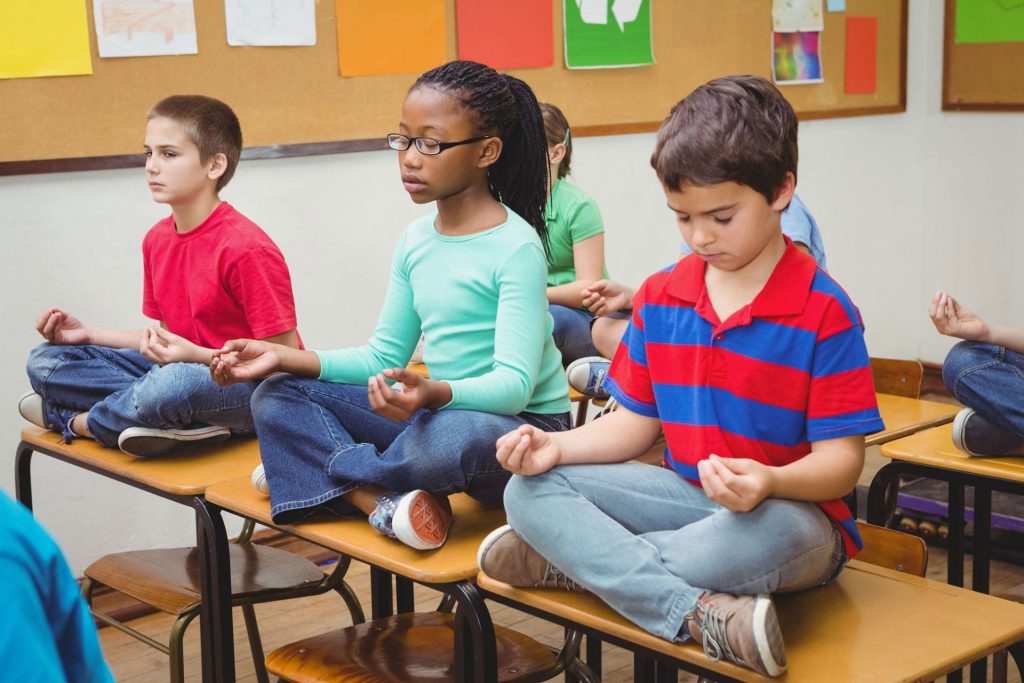“If every 8 year old in the world is taught meditation, we will eliminate violence from the world within one generation.”
― Dalai Lama
What is Mindfulness?
/ˈmīn(d)f(ə)lnəs/
Noun
1: the quality or state of being conscious or aware of something.
2: a mental state achieved by focusing one’s awareness on the present moment, while calmly acknowledging and accepting one’s feelings, thoughts, and bodily sensations, used as a therapeutic technique.
I once heard a mindfulness practitioner compare the mind to a piece of pure gold buried inside a big ball of cow manure. In this sense, mindfulness is about slowly clearing away all of the crap to get to that pure gold.
Mindfulness is the practice of purposely paying attention to the present moment in a non judgemental way, with an attitude of friendly curiosity and kindness. It is directing your attention to what is actually happening in the NOW and looking at the present moment compassionately.
Our minds are constantly moving, dwelling on the past or anticipating the future, meanwhile we miss the gifts of the present moment. Research reveals that at least 47% of the time we are not present. We’re here but we’re not here. FOr the average person, moments of uninterrupted now typically last anywhere between 1-10 seconds before the mind wanders away.
We tend to live our lives on autopilot, filtering out most stimuli, and not fully aware of the present moment.. One of the goals of mindfulness is to catch autopilot as soon as possible and bring ourselves back to a state of greater awareness.
Mindfulness isn’t something you need to make time for or something that is difficult to fit in your schedule. It is something that is accessible to us in every moment, that is if we can remember it; if we can notice we are on autopilot and bring our attention back to the present.
Mindfulness is simply the practice of cultivating moment to moment awareness of the present, meaning that if you are washing the dishes, you’re washing the dishes and not thinking about what you’re going to have for supper or ruminating on an argument you had the night before.
Zen proverb: “When walking, walk. When eating, eat.”
Why is Mindfulness of Value in Education?

Scientific research has shown that teaching mindfulness in schools:
- Enhances focus.
- Increases attention span.
- Improves self-regulation.
- Reduces bullying.
- Improves overall emotional health and well-being.
- Reduces stress and anxiety.
- Increases compassion for others.
Ohio Congressman Tim Ryan author of A Mindful Nation: How a Simple Practice Can Help Us Reduce Stress, Improve Performance, and Recapture the American Spirit points out that teachers are always telling students the importance of paying attention, but no one ever actually teaches them how to pay attention. Mindfulness provides them with that skill set.
“One of the things that I really like about the practice of mindfulness, and moving this into the field of education — teaching our teachers about mindfulness and social and emotional learning, teaching our students how to practice mindfulness — is you’re actually giving them a technique, and a skill set, on how to mobilize their attention, and place it on a problem that they’re dealing with in their classroom.
Mindfulness teaches these kids how to pay attention. It teaches them how they are connected to other people, and how to be kind to other people, and to see the problems that other people may be dealing with, and then understand that in a more compassionate way.
I don’t care how much money we spend on education, it doesn’t matter what programs we’re trying to teach our kids… if they don’t have the fundamental building block of learning, which is being able to control your attention span, all the rest is not going to be effective.”
Learn More
“In Asian languages, the word for ‘mind’ and the word for ‘heart’ are the same. So if you’re not hearing mindfulness in some deep way as heartfulness, you’re not really understanding it. Compassion and kindness towards oneself are intrinsically woven into it. You could think of mindfulness as wise and affectionate attention.”
― Jon Kabat-Zinn
What Is Heartfulness?
1: the direct experience of the heart.
2: the simple and subtle practice of heart-based meditation that connects each of us with the light and love in our hearts.
3: Taking action for the common good with our character strengths
4: The fact or quality of being heartful, sincerity or warmth of feeling or expression
According to Heartfulness.org, “Heartfulness is a heart-centered approach to life, where you will be able to live each moment by the heart. It is to live naturally, in tune with the qualities of a heart enlightened and refined through spiritual practice. These qualities include compassion, sincerity, contentment, truthfulness, and forgiveness; attitudes such as generosity and acceptance; and the heart’s fundamental nature, which is love.”
The heart is the missing piece of mindfulness in the west. Without the warm feelings of love, compassion, and kindness, mindfulness can feel cold, heady, and even detached. Mindfulness practice was intended to be practiced from a place of love, bringing a quality of compassion and kindness to whatever experience is happening in the present moment.
In ancient times, the heart was considered the center of consciousness and the mind was merely an extension of it. In modern times, our society focuses heavily on matters of the mind and ignores the heart almost entirely.
Heartfulness is about connecting to the heart and its qualities of love, compassion, kindness, and empathy. It is opening our hearts to unconditional love for ourselves and for the world around us. Heartfulness is a practice of being present in the heart and creating space between thoughts, reducing mental chatter about the past or future.
Why Heartfulness is of Value in Education
Having a smart brain is not enough; we also need a warm heart. Education needs not only to develop our intelligence but also to support the basic human values of warm-heartedness and compassion. – Dalai Lama
― Dalai Lama
Heartfulness is of value in education, because it is who we are. It is our true nature. Each one of us has within us the capacity for love, compassion, empathy, acceptance, tolerance, and forgiveness. These are the highest human virtues and our education system should reflect their importance. If these inner values were our educational benchmarks and the heart was the central focus of education, imagine how that could change society. Love is the greatest force in existence and our most powerful asset as human beings. Love has the power to create true, lasting change for our world.
Albert Einstein once said, “You can’t solve a problem from the same level of consciousness that created it”. Our world is facing many serious problems today; all of which were created from a consciousness rooted in selfishness and materialism. What the world needs most is a collective consciousness rooted in love and unity and this begins in our schools, through social, emotional, and ethical learning that places love at the center of education.
Learn More







